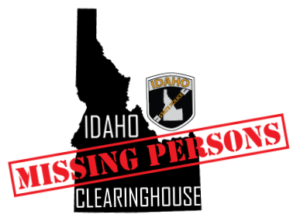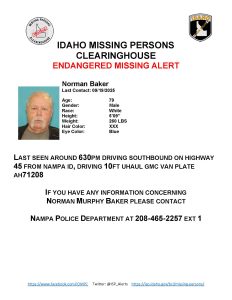LOCATED
Name of Person:
Norman Baker
Missing Since:
09/19/2025
Missing From:
Nampa ID
Age Now:
79
Sex:
Male


